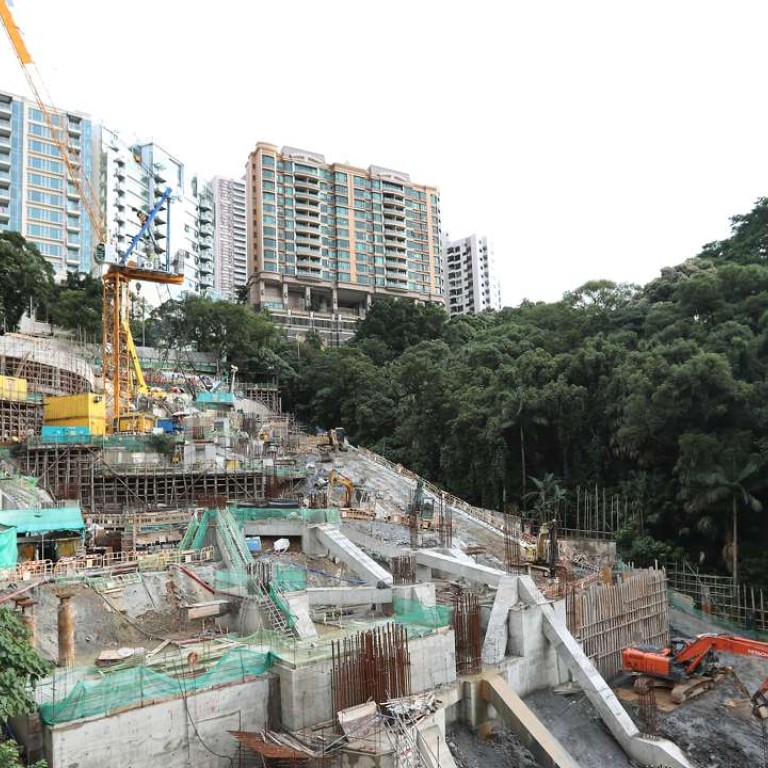
Hong Kong’s Mid-Levels site haunted by a deadly landslide past
Kotewall Court tragedy, which happened 44 years ago and claimed 68 lives, has left the area tainted by superstition
Real estate and superstition – you’d be hard pressed to find a place on the planet more obsessed with either than Hong Kong – and this weekend the two collided in a perfect storm of spookiness on one of the world’s most expensive plots of real estate.
Yesterday marked the 44th anniversary of one of the worst natural disasters in Hong Kong’s history – the 1972 Kotewall Road landslide which claimed the lives of 68 people and wreaked havoc through a swathe of Mid-Levels.
The tragedy’s ground zero was Kotewall Court – a high-rise residential block which collapsed onto the plot of 44 Kotewall Road during severe weather, triggering the deadly slip of land that has gone down in the city’s history.

Watching the building crumble into a cloud of dust from his verandah, one witness described furniture falling from the building – including a bed with people in it – along with the cries of victims trapped under the rubble.
The number 44 – four sounds like the word for death in Cantonese – was to take its own toll.
In subsequent years, as memories of the killer slide began to fade, a new development comprising two blocks – called University Heights and built by development giant Chinachem Group – rose on the site.
However, there was a problem. The history of the area meant no-one wanted to live there – at least not at the sort of prices that would turn a profit – and eventually Chinachem decided to cut their losses and tear the whole thing down.
Now, the developer – best known for its late, diminutive, pig-tailed tycoon boss Nina Wang Kung Yu-sum – is resurrecting the development and, perhaps understandably, trying to play down its deadly past.
Plans are in place for three luxury residential blocks with 14 floors and four levels of parking lots and opinion is divided over whether the new development will be able to shake off the landslide’s superstitious legacy.
“The project was built after the disaster, adjacent to the site of the largest building destroyed in the landslide – Kotewall Court,” said a former Mid-Levels real estate agent, Chester So.

So works at property listing website SpaciousHK, which provides data on “haunted real estate” in a city where superstitions continue to influence property prices.
“The occupancy rate and rental rates for University Heights ran significantly below nearby buildings with an approximate 20 per cent discount for rental rates at University Heights versus nearby buildings,” So said.
However, feng shui master Louis Wong Pak-Tin, takes a different view: “Because so many people died, the developer will need to do a blessing ceremony to comfort the souls so that the ghosts can go to the heaven. I don’t know if the developer has done this.
“It is likely the fortunes of the land will have changed [since 1972], because ... the fortune of a place changes every 20 years. The Mid-Levels are more crowded than they used to be. This means the ghosts are less likely to want to stay in the area.”
Chinachem Group did not respond to requests on whether there were concerns the plot’s ghostly legacy might continue to influence future revenues.

